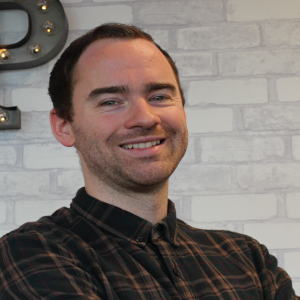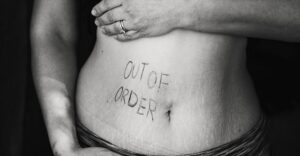Perhaps one of the most revolutionary aspects in the history of our species is the growing acceptance that aging is not predestined — it is actually a disease. One that, pretty soon, may be treatable and even preventable. Actually, we don’t have to wait around for science to provide us with treatment for this mother-of-all-diseases. It has long been understood that eating well, along with the proper exercise can prolong our lifespans as well as our healthspans (that is how long we live active and fit, before debilitation by health problems). But we have never really understood why diet and exercise work to keep the body young, until now.
What aging ‘is’
To put it very simply, aging is a loss of information over time. At least, that’s according to the most prominent theory on aging there is: the information theory of aging.
In the body, our genes can change and express themselves in two different ways: genetically and epigenetically, but both processes store this ‘information’ about how they change in different ways. Genetic changes are digital, and epigenetic changes are in the analog format.
Anyone who is old enough to remember the switch from vinyl to CD players will know that, although analog vinyls sound terrific, the sound quality quickly deteriorates. Whereas a well-preserved CD sounds great forever.
The epigenome is like a CD player reader. If it gets too damaged, it cannot read the CD (our DNA). This — at the most basic level — is what we currently think causes the aging process, a steady decline in our body’s ability to ‘read’ our DNA.
Fortunately, scientists have identified seven ‘longevity’ genes called sirtuins. We can think of our longevity genes as a sort of emergency-response team. They are the health workers and the police officers of the body. Whenever there is an ‘emergency’ (i.e. whenever our DNA gets damaged, either through outside forces or its own mutations) these emergency workers rush to the scene and repair the damage.
How a longevity diet keeps us younger
In order to slow or even reverse the aging process (at least, for a little while) it is necessary to give these longevity genes a helping hand. And we can do that by eating the right things but by also not eating. Scientists are slowly coming to realise the importance of fasting on the body. There are many theories about why fasting might be beneficial for us. One is that it closely resembles a way of life that was normal up until just a few decades ago. People would often go hungry, and couldn’t always go to a supermarket to buy food. It is therefore actually unnatural to always have food at hand, and to eat it when we are hungry.
Before the age of supermarkets and consumerism, our bodies frequently went hungry. And this put our bodies under a mild stress. And as it turns out, stress is the helping hand that the longevity genes need, to kick start them into action.
As our body experiences hunger, it begins to worry about when the next meal will come from, and so it kicks into survival mode. This sends alarm bells ringing, activating our longevity genes — our emergency response teams — who put in an extra shift to repair any broken DNA in the body.
In the modern era we have to trick our bodies into action by fasting. But the desired end results are the same. The longevity genes repair our DNA breakages faster, quicker, and more often, if we put the body under mild stress.
How ‘mild stress’ is important for the body
This is not to say that you should starve or malnourish the body. Far from it, as that would be damaging to the body. It just means feeling hungry from time to time, and missing a few meals. We call this healthy intermittent fasting.
Studies have shown that fasting for just three days a week may extend the human lifespan by as much as 20 percent and in mice by as much as 40 percent. Fasting overall has almost no negatives, but a whole plethora of positives including enhanced physical and emotional well-being, and improvements in general risk, health, and cardiovascular complaints.
Some diets include the 4-8pm diet, which essential means skipping breakfast and having a late lunch and even later dinner. The 5:2 diet involves strict fasting twice a week, and has been demonstrated to quickly remove harmful belly fat. And then there is the so-called “Eat Stop Eat” diet, which requires a person to fast intermittently for one week of the month. In all of these fasting diets, subjects have demonstrated lower blood sugar and insulin levels, and an increase of life expectancy by an estimated 11-28 percent (when compared to mice).
As for food: you are probably already familiar with what constitutes a healthy, or eat-well plate. People should aim for a Rabbit Diet that is overwhelmingly fruits and vegetables, with some carbs and meat. Try to eat organic if you can, as organic produce is grown under more stressful conditions and therefore contains more resveratrol — a compound that helps to kickstart our longevity genes.
Eating only plant-based amino acids is also a great way to induce mild stress. Almost anyone who eats meat already consumes too many amino acids. Plants not so much, but through eating plant-based foods we can easily still get enough to live well. Yet at the same time, this is perceived as ‘starving’ the body of amino acids, and it triggers the same survival mechanisms, lighting our longevity genes into action.
Apart from that, that science of eating well is pretty much settled and hasn’t changed for decades.
How longevity exercise routines keep us younger
Exercise that works to extend both our health and lifespans works on the same principle as the longevity diet. The key is to place the body under a mild stress, one that triggers our longevity genes into action.
This can be as simple as going for a brisk walk on a cold day in just a t-shirt. Just a quick walk around the block. Feeling cold also puts the body under a mild stress, and both the double-whammy of cold and exercise can really help to get the longevity genes working. As with fasting, don’t overdo it. In fact, prolonged exposure to the cold can make a person seriously ill. You want mild stress, a quick stroll and exposure to the uncomfortable cold.
The best way to kick-start the longevity genes, however, is through high-intensity interval training (HIIT). You will know what high-intensity training is if you do it correctly — the heart should be beating rapidly, sweat should be running off, and it should be difficult to say a sentence without stopping for breath.
This is what’s known as the hypoxic response. Even a short, 30 minute HIIT workout — such as a jog five times a week — can make the body physically a decade younger. If half an hour is too much, even a 15 minute sprint can reduce overall all-cause mortality by 45%.
How to improve your healthscape
The thought of “curing” age or extending the lifespan of humans by decades is a scary and exciting prospect, just read this article on the ethics of a world in which humans might live 150 years, if not longer.
Whether a “cure” does come anytime soon or not, the reality is we can already start treating ourselves for the disease in the here and now. Food is medicine. So eat great, organic fruit and vegetables mostly, aiming for a rainbow of colours. And feel hungry from time to time. It’s good for you.
Finally, be sure to take just 15-minutes a day to work up a sweat. Everyone has time for 15-minutes in a day. It will make you look and feel decades younger, and may even give you an extra decade of life on this Earth.








